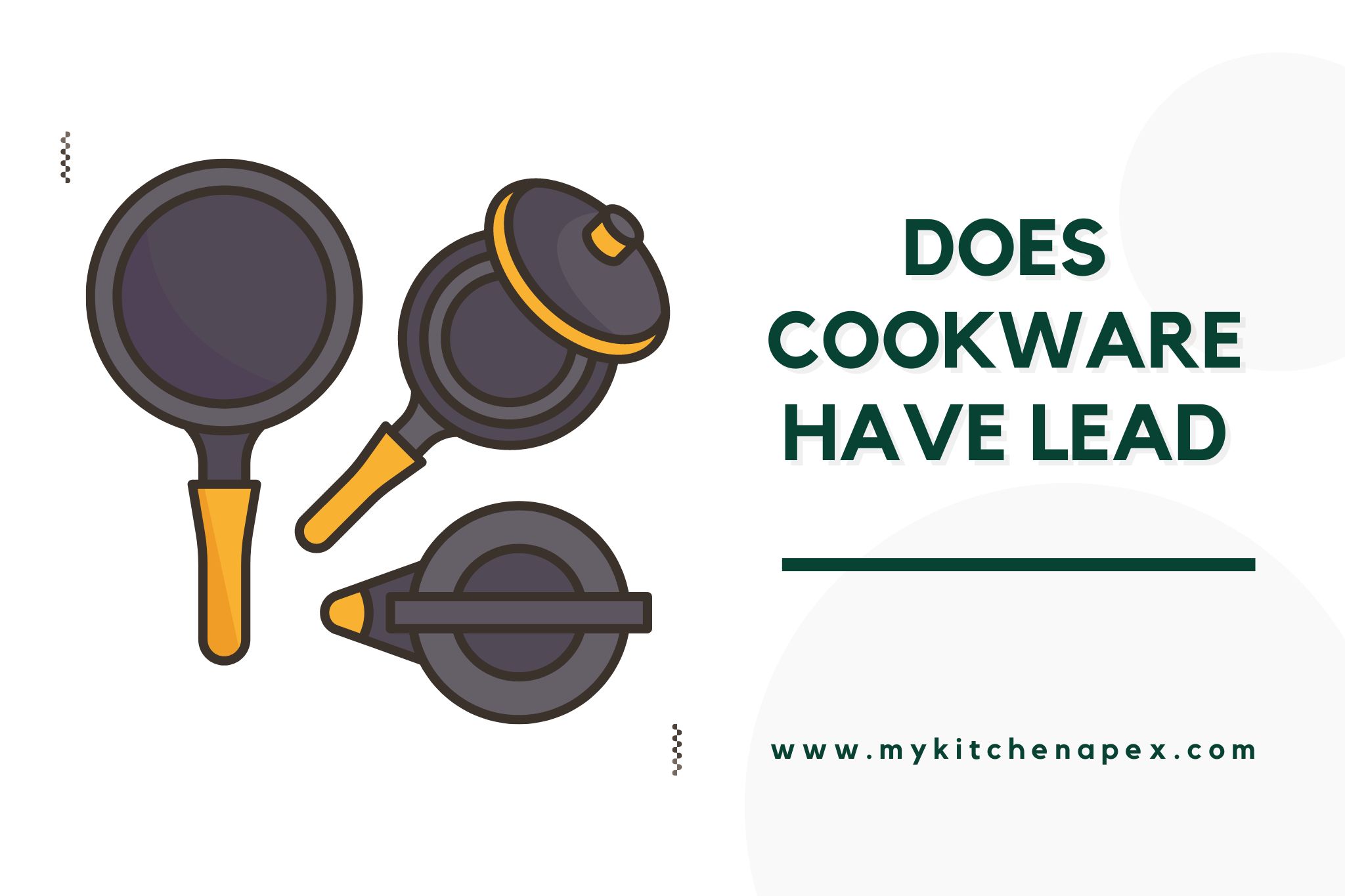Originally Created on: March 6, 2024 @ 8:45 pm
Are you concerned about the safety of your cookware? Many people wonder whether their pots and pans contain lead, and for good reason. With the potential health risks associated with lead exposure, it’s important to understand the presence of this toxic metal in the items we use to prepare our food.
Recent studies have shown that some cookware, particularly imported and older pieces, may contain lead. This has raised concerns among consumers and sparked a growing interest in finding lead-free alternatives.
As we delve into this topic, we’ll explore the potential sources of lead in cookware and provide guidance on how to ensure the safety of your kitchen tools.
Table of Content
Highlights:
- Some types of cookware, especially older or antique pieces, may contain lead.
- To minimize the risk of lead exposure, use cookware labeled as lead-free or made from stainless steel, glass, or ceramic.
- It’s important to test older or imported cookware for lead and to replace worn or damaged items.
does cookware have lead
Yes, some types of cookware can contain lead, especially older or antique pieces. Lead can leach into food when acidic ingredients are cooked or stored in these types of cookware, posing a potential health risk.
It’s important to be aware of the materials used in your cookware and to avoid using items that may leach lead into your food.
To minimize the risk of lead exposure from cookware, it is recommended to use cookware that is labeled as lead-free or is made from materials such as stainless steel, glass, or ceramic. Regularly inspecting and replacing older cookware, especially those with chipped or damaged surfaces, can help reduce the risk of lead exposure.
Overall, being mindful of the materials used in your cookware and taking steps to minimize potential lead exposure can help protect your health and well-being.
You May Also Like: do pans have copper
How do I know if my cookware has lead?
You can test your cookware for lead using a do-it-yourself lead test kit, which is available at most hardware stores. Another option is to contact the manufacturer and ask if they have conducted lead testing on their products.
If you bought the cookware overseas or from a vintage store, it’s a good idea to have it tested for lead, as older products may not meet current safety standards.
High levels of lead in cookware can be harmful to your health, so it’s important to take this issue seriously. Look for signs of wear and tear on the cookware, especially if it has a ceramic glaze, as this can potentially leach lead.
If your cookware is imported from certain countries, it may be more likely to contain higher levels of lead, so it’s important to be vigilant and proactive in testing for this toxic metal.
Does stainless steel contain lead?
No, stainless steel does not contain lead. Stainless steel is a type of metal alloy that is made primarily of iron, with the addition of other elements such as chromium, nickel, and molybdenum.
These additional elements help to give stainless steel its corrosion-resistant properties and durability. Unlike some other types of metals, stainless steel does not contain lead as a component.
It’s important to note that while stainless steel itself does not contain lead, there can still be small amounts of lead present in stainless steel items if they have been contaminated during the manufacturing process.
However, when properly produced and used, stainless steel products are considered safe and lead-free for everyday use.
Also Read: do cooking pots have lead
Does ceramic pan have lead?
Ceramic pans usually do not contain lead, as they are typically made with a non-stick coating that is free of harmful chemicals. However,
it’s important to note that some low-quality ceramic pans may contain lead, so it’s essential to purchase from reputable brands and manufacturers to ensure the safety of the cookware. It’s also advisable to look for ceramic pans that are labeled as lead-free to provide peace of mind when using them in the kitchen.
To ensure the safety of ceramic pans, consumers should look for products that are labeled as lead-free and are made with high-quality materials. It’s important to follow the manufacturer’s guidelines for proper use and care of the cookware to prevent any potential hazards.
By choosing reputable brands and taking necessary precautions, individuals can enjoy the benefits of using ceramic pans for their cooking needs without worrying about the presence of lead.
does ceramic cookware have lead
Ceramic cookware can potentially contain lead, especially if it is imported or of low quality. When improperly manufactured or glazed, the lead can leach into food during cooking. This can pose serious health risks, particularly for pregnant women, infants, and young children.
To ensure the safety of your cookware, it is crucial to choose high-quality ceramic cookware that meets safety standards. Look for cookware that is labeled as lead-free and meets FDA regulations for food contact.
Consider purchasing ceramic cookware from reputable and trusted brands to minimize the risk of lead contamination. By taking these precautions, you can enjoy the benefits of ceramic cookware without compromising your health.
Also Read: can you use induction cookware on an electric stove
Final Thoughts
To ensure the safety of your cookware, it’s important to be aware that some types, especially older or imported pieces, may contain lead.
This toxic metal can leach into food, posing health risks. Choose cookware labeled as lead-free, made from materials like stainless steel, glass, or high-quality ceramic, and regularly inspect for wear and tear.
Testing kits and contacting manufacturers can help assess the presence of lead. While stainless steel itself does not contain lead, small amounts can be present due to contamination. High-quality ceramic pans are generally lead-free, but it’s important to purchase from reputable brands to minimize any potential hazards.

